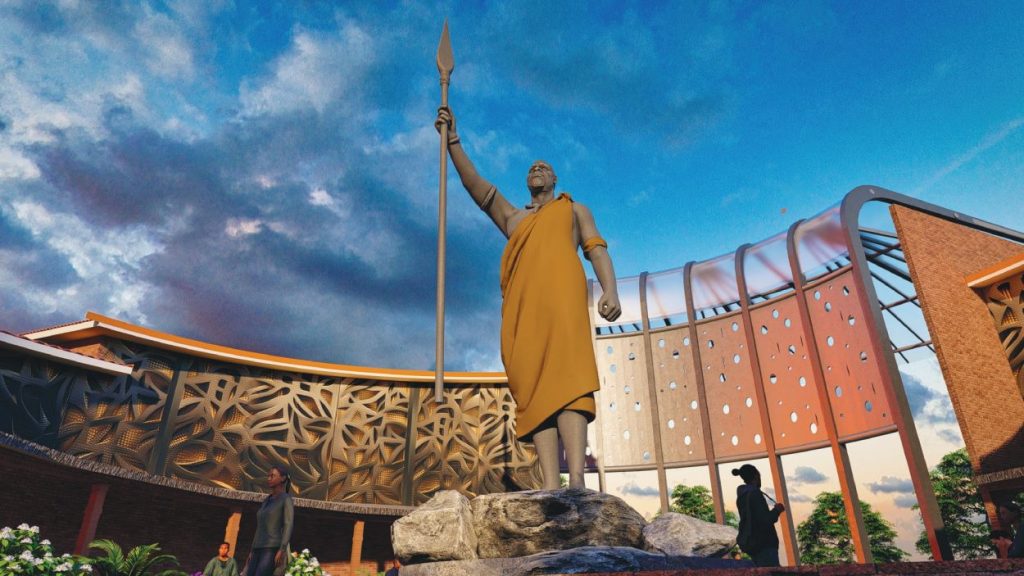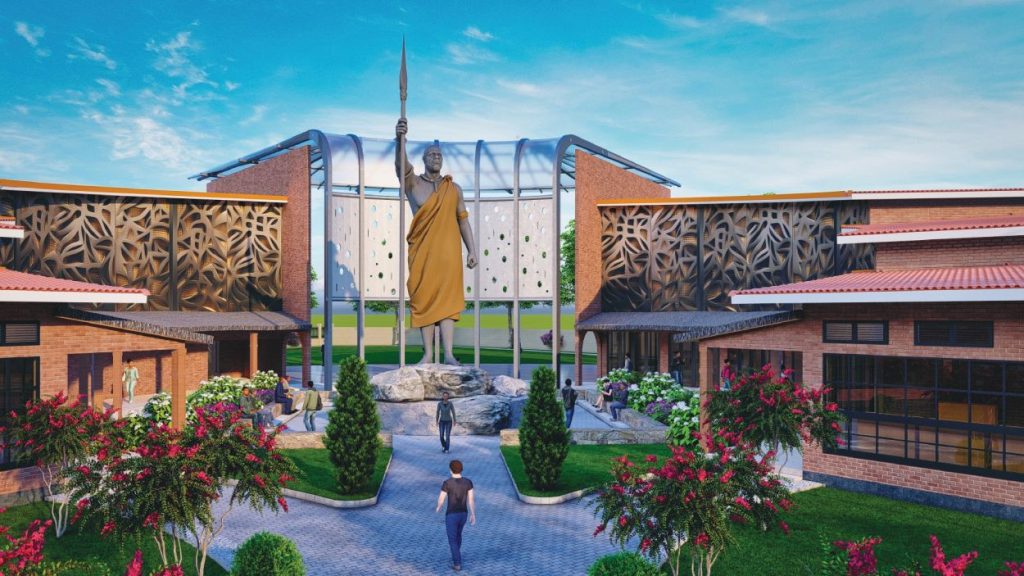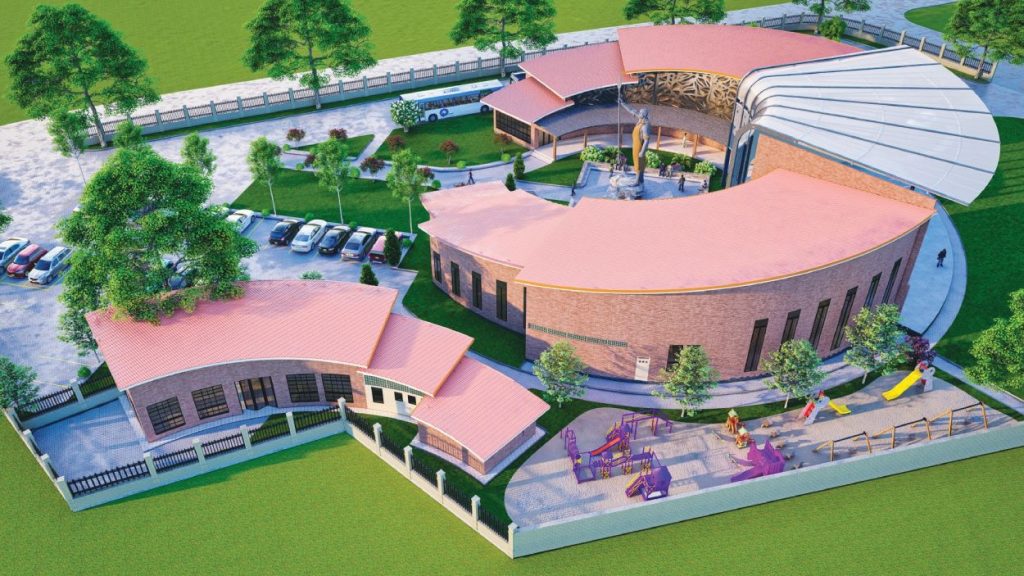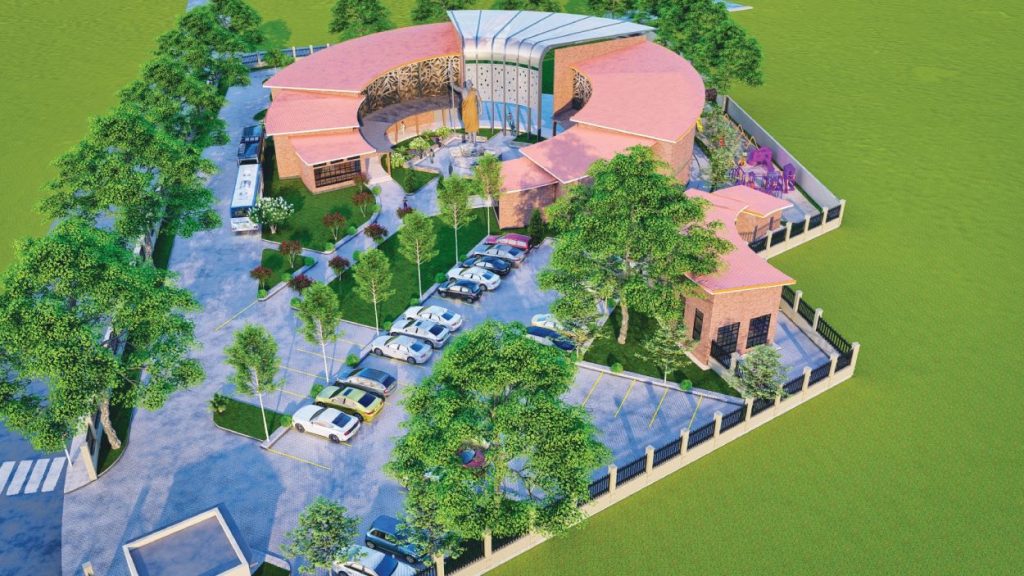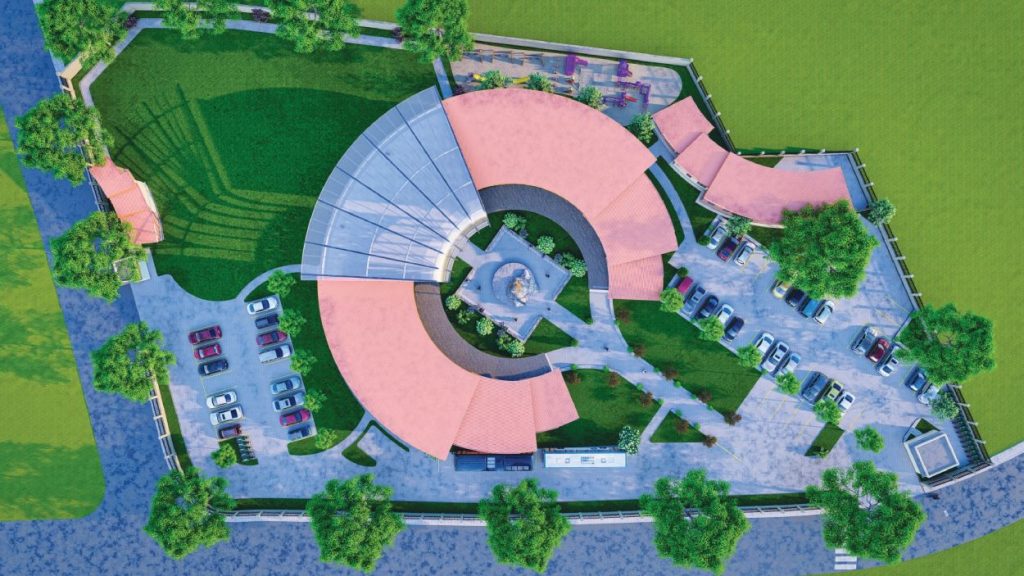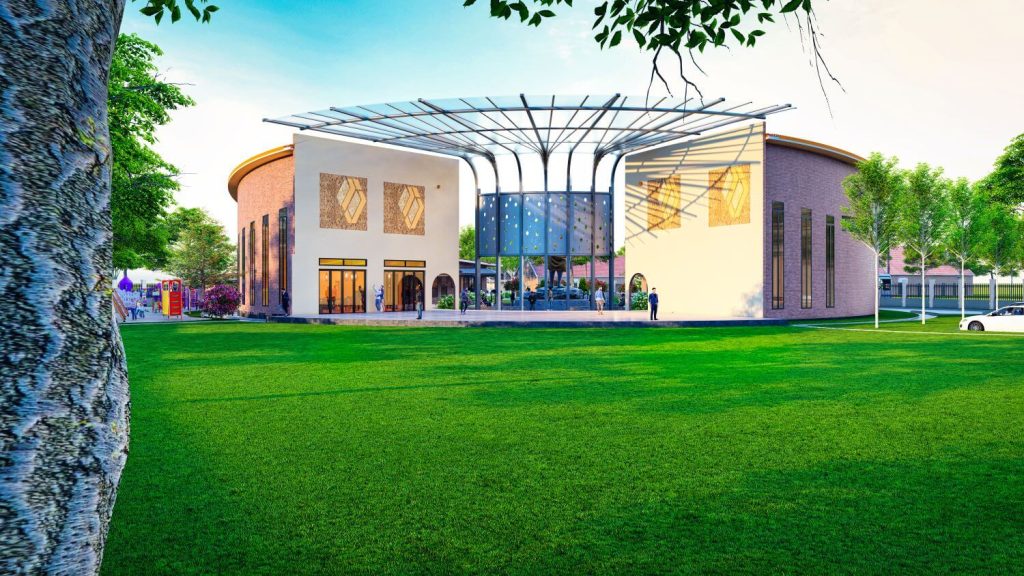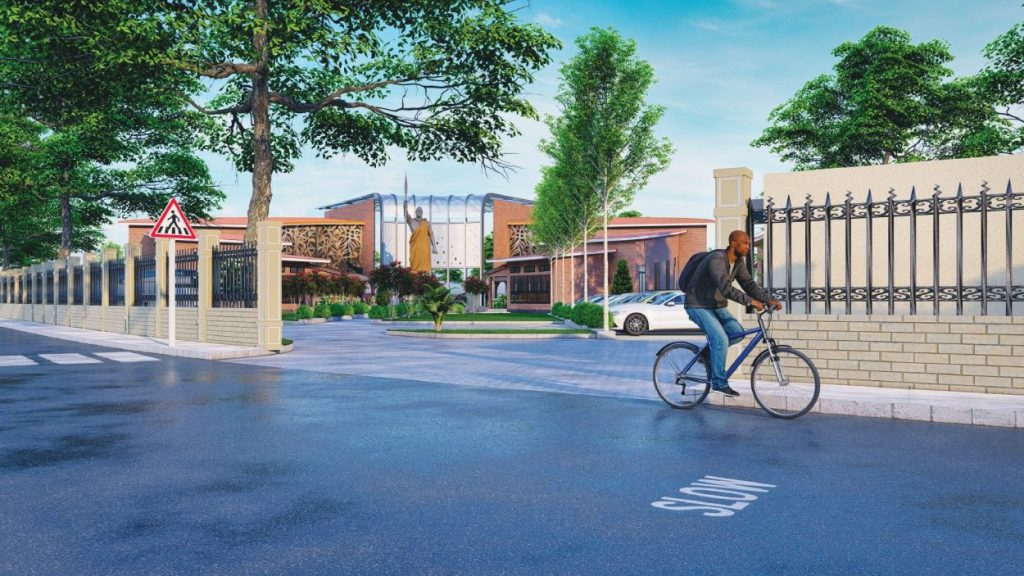Kabalega Cultural Square
Kabalega Cultural Square is a special legacy project to mark 100 Years of Omukama (king) Cwa II Kabalega's legacy (1853 - 1923). Omukama Cwa II Kabalega is most notably remembered for his development, positive social reforms, efforts towards reunification of the former Kitara Empire, abolition of slave trade, promotion of human rights, and resistance to colonial rule. In 2009, Omukama Cwa II Kabalega was post-humously declared a national hero by the Government of Uganda.

The design inspiration is drawn from a number of aspects about Bunyoro-Kitara and the Legacy of Omukama Cwa II Kabalega.
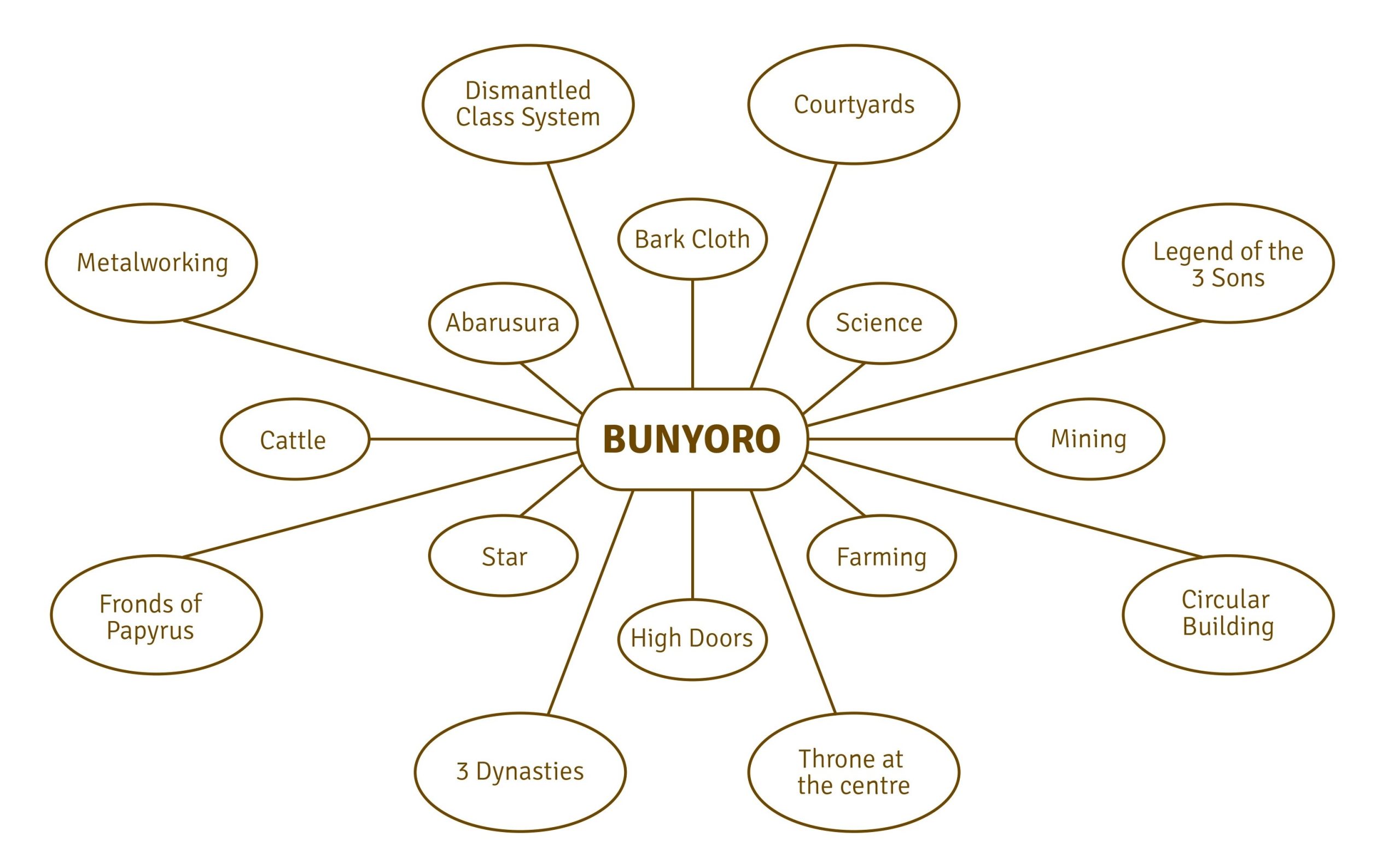
Kabalega's Palace, known for its circular design and towering entrances, serves as the primary inspiration for shaping the overall structure of the center. Two semi-circular buildings, positioned adjacent to one another, together define a circular pathway, symbolising unity and continuity while paying homage to Kabalega's enduring legacy.

The concept of the three dynasties, namely the Batembuzi, the Bachwezi, and the Babiito, alongside the legend of Kintu's three sons (the first ruler of Bunyoro-Kitara), forms the basis for incorporating elements in threes or multiples of three. Each of the semi-circular structures is carefully divided into three segments, and the majority of the measurements are intentionally chosen as multiples of three. These design choices not only symbolise but also pay homage to the profound historical significance of these dynasties within Bunyoro Kitara's history.

Isingoma Rukidi Mpuuga, the inaugural Omukama of the Babiito dynasty, envisioned his palace to resemble that of Wamara, the final Omukama of the Bachwezi dynasty, complete with courtyards and apartments. This vision served as the catalyst for the choice of incorporating a central courtyard flanked by the two semi-circular buildings. The central courtyard's deliberate circular design not only pays homage to Kabalega's Palace but also creates a serene and contemplative space where visitors can reflect upon and appreciate the enduring legacy of Kabalega.
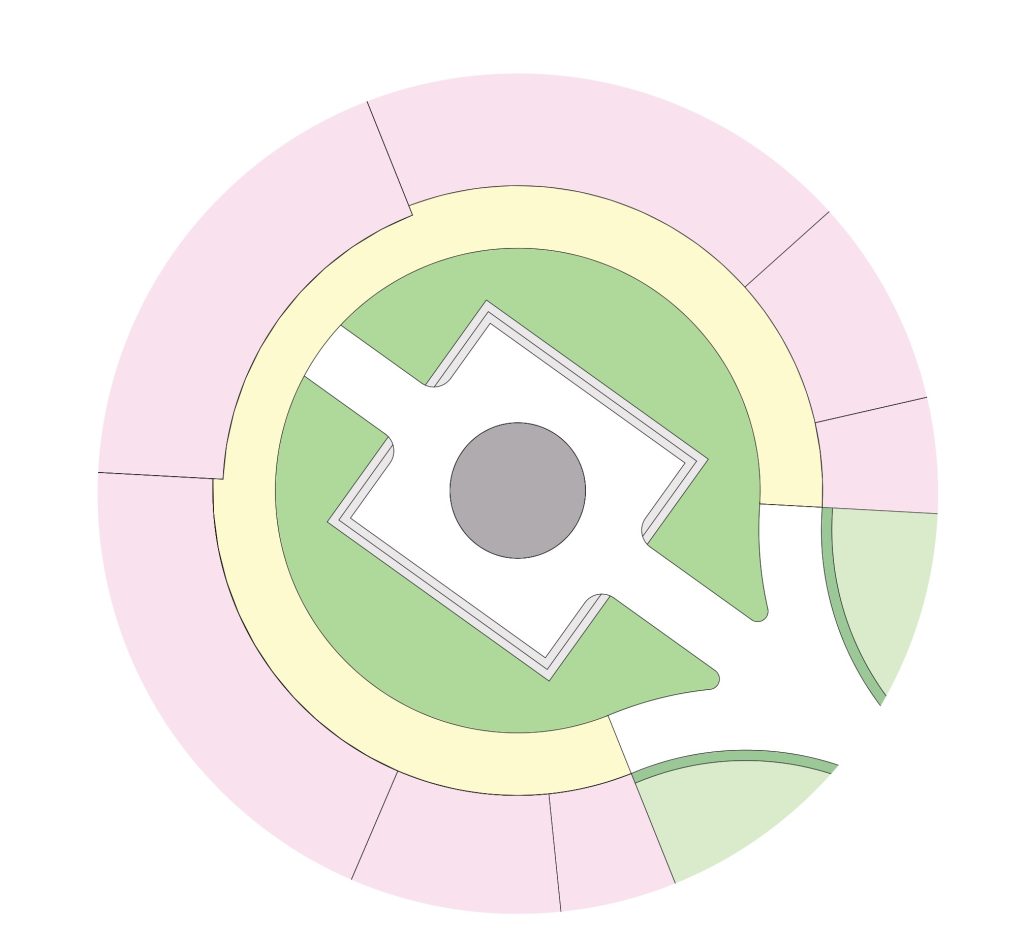
Inside Kabalega's Palace, at the very centre of the room, Omukama Kabalega would sit regally upon an elevated throne flanked by two posts that supported the hall's roof. Upon this throne, a rustic and expansive armchair adorned with animal skins was placed. To honor the significance of the central throne within Kabalega's Palace, we propose the construction of a Kabalega monument at the center of a circular courtyard. This monument will serve as a central focal point, emphasizing Kabalega's pivotal role in Bunyoro's rich history.
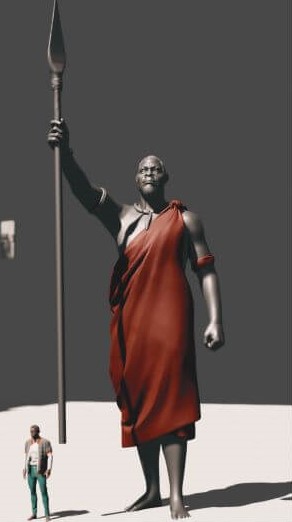

“He was in national dress, namely, he was wrapped up to the chest in a piece of fine salmon-coloured barkcloth, from which, at times, his feet protruded. From the chest upwards he was naked. Above the waist, on his right arm, he wore a thin bracelet of iron and above the right elbow an amulet of roots, which so tightly encilrcled his arm as to be embedded in the flesh. Over his left shoulder he wore, in the manner of a plaid, another piece of pretty barkcloth of a somewhat darker colour. He had a necklace made from the hairs of a giraffe’s tail with a single large glass bead in the centre.”
Metalworking has been a pivotal industry in Bunyoro throughout its history. Iron production and metalworking are known to have commenced as early as the 10th century C.E., yielding iron tools and weapons that contributed significantly to agricultural and societal advancement. The art of ironworking played a pivotal role in shaping Bunyoro's society, economy, and culture.
Drawing inspiration from this rich heritage of metalworking in Bunyoro, our design will incorporate steel elements. These elements will serve a dual purpose, acting as both decorative features and profound connections to the region's enduring heritage.
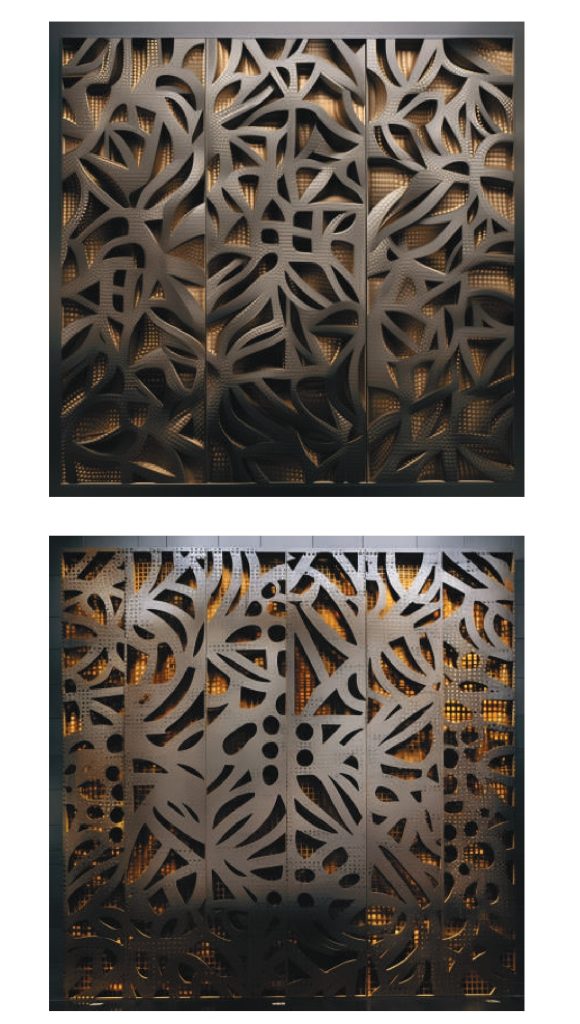
Omukama Kabalega is renowned for his pivotal role in dismantling the class system through his reformative efforts. To symbolize the unity he fostered, our design incorporates a pattern inspired by the elements that represented the three distinct classes: potatoes and millet (symbolizing the Bairu, the farmers, and servants), the cattle strap (representing the Bahuma, the herdsmen), and the ox head (signifying the Bakama, the ruling class). This intricate pattern will be applied to the steel metalwork, serving as a powerful emblem of Kabalega's legacy.
In official ceremonies, a customary practice involved the scattering of green papyrus fronds within Kabalega's palace, a tradition similarly observed in Bunyoro households during special occasions. The fan-like shape of these fronds has inspired the design of an imposing pergola crafted from patterned steel sheets. This pergola serves a dual purpose: it gracefully connects the two semi-circular structures enclosing the courtyard and functions as a sheltering canopy for a performance stage. Additionally, the distinctive texture of the papyrus finds artistic expression in the form of wall or floor embellishments within the performance stage area.


Below is the site layout with placement of the different amenities it will host.
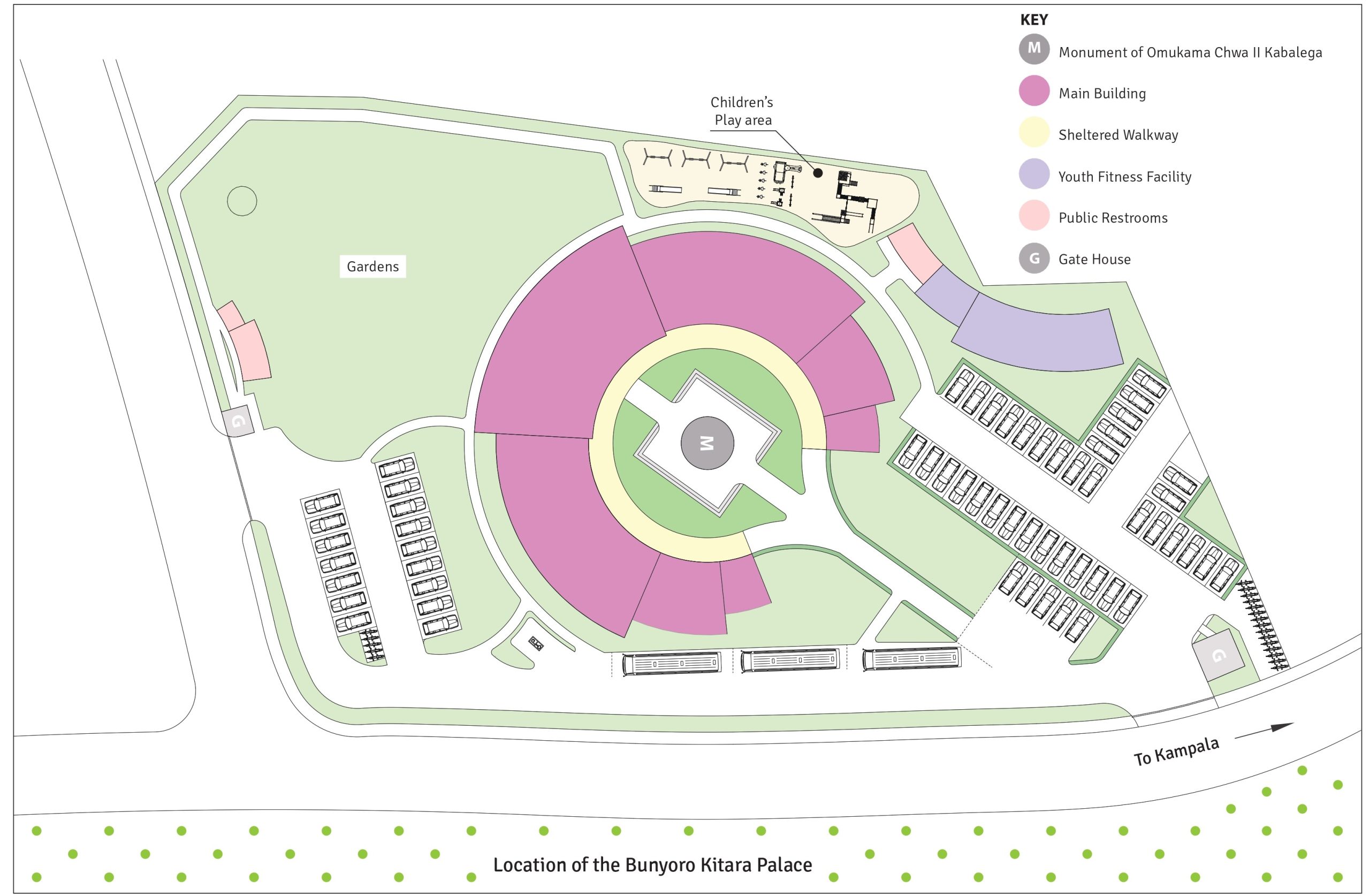
Artistic impressions of how the facility will look like when complete.
